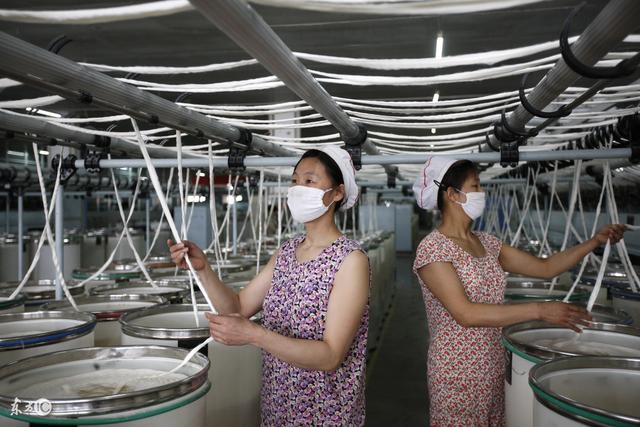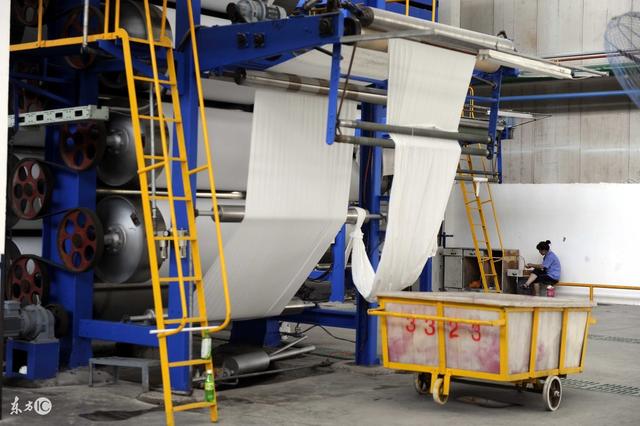I. Occupational hazards and prevention in the textile process Dust Cotton textiles have the possibility of generating dust during the whole production process. The dust is most generated during the process of cotton opening, cotton blending and cotton cleaning. Long-term inhalation of cotton, hemp and other dust can cause airway obstructive diseases. Patients have chest tightness and chest tightness. Shortness of breath and acute lung dysfunction. When preventing, the dust of the cotton blender and the cotton cleaner should be sealed, ventilated and dust-removed, and the treatment effect is very good; the carding and the dust-collecting device can greatly reduce the dust intensity; in addition, the workplace should pay attention to Use wet cleaning. Personal protective equipment recommended: dust mask. 2. High temperature and high humidity Textile workshops require a certain temperature and humidity. The temperature requirement is above 18.3 °C. The solar radiation in summer plus the heat generated by the machine operation and the heat dissipation of the human body can raise the temperature of the workshop to above 40 °C. At this time, the most effective way to cool down is to use air conditioning, and roof spray can be used as an auxiliary cooling measure. The relative humidity of the textile workshop should be maintained between 45% and 80%. The wind speed in the workshop should not be too high, generally less than 0.5 m/s. In the sizing workshop, high temperature and high humidity are the main occupational hazards, and the physical labor is strong (transporting the pulp powder, putting the pulp into the cooking tank, handling, installing and removing the heavy weaving shaft). Recommended for personal protective equipment: overalls, gloves, etc. 3. Noise and vibration The workshop that produces the most noise is the weaving workshop, which can reach 97-105 dB, followed by the spinning workshop, which reaches 90-97 dB. Sound absorbing materials and the like can be used for prevention. Personal protective equipment recommended: earplugs. 4. Lighting problems Textile mills require a lot of jobs with limited vision. Therefore, insufficient or unreasonable lighting will become an occupational health problem. The textile factory workers are suffering from eyesight. General requirements for working surface illumination: 60 Lux for spinning (recommended in 1975, the general lighting used alone is not less than 75 Lux). 5. Other factors In the textile industry, physical intensity, physical position, and individual organ tension are common problems. The fundamental solution is to improve the adaptability of textile equipment, labor processes and people through technological transformation. Second, the occupational hazards and prevention during the printing and dyeing process The main occupational hazards in the printing and dyeing industry are high temperature, high humidity and toxic dye vapors. The relative humidity of the process of scouring, bleaching, drying, dyeing, etc. can reach more than 80%, and the room temperature in summer can reach 40 °C. Chlorine gas is produced by bleaching with sodium hypochlorite and finally pickling. The use of strong acid and strong alkali in dyeing can cause acid-base burn and acid mist stimulation. When formulating and using aniline dye, it can be exposed to aniline liquid or steam, which may cause poisoning and dermatitis. In addition, aniline dyes and fluorescent whitening agents may have carcinogenic effects. The precautionary measures are mainly the sealing and automation of dye preparation; the installation of insulated hoods, after processing a large amount of hot gas and harmful substances, are discharged to the outside of the workshop. Personal protective equipment recommended: gas masks, acid and alkali chemical protective clothing, acid and alkali resistant gloves, chemical resistant boots, etc. I. Occupational hazards and prevention in the textile process Dust Cotton textiles have the possibility of generating dust during the whole production process. The dust is most generated during the process of cotton opening, cotton blending and cotton cleaning. Long-term inhalation of cotton, hemp and other dust can cause airway obstructive diseases. Patients have chest tightness and chest tightness. Shortness of breath and acute lung dysfunction. When preventing, the dust of the cotton blender and the cotton cleaner should be sealed, ventilated and dust-removed, and the treatment effect is very good; the carding and the dust-collecting device can greatly reduce the dust intensity; in addition, the workplace should pay attention to Use wet cleaning. Personal protective equipment recommended: dust mask. 2. High temperature and high humidity Textile workshops require a certain temperature and humidity. The temperature requirement is above 18.3 °C. The solar radiation in summer plus the heat generated by the machine operation and the heat dissipation of the human body can raise the temperature of the workshop to above 40 °C. At this time, the most effective way to cool down is to use air conditioning, and roof spray can be used as an auxiliary cooling measure. The relative humidity of the textile workshop should be maintained between 45% and 80%. The wind speed in the workshop should not be too high, generally less than 0.5 m/s. In the sizing workshop, high temperature and high humidity are the main occupational hazards, and the physical labor is strong (transporting the pulp powder, putting the pulp into the cooking tank, handling, installing and removing the heavy weaving shaft). Recommended for personal protective equipment: overalls, gloves, etc. 3. Noise and vibration The workshop that produces the most noise is the weaving workshop, which can reach 97-105 dB, followed by the spinning workshop, which reaches 90-97 dB. Sound absorbing materials and the like can be used for prevention. Personal protective equipment recommended: earplugs. 4. Lighting problems Textile mills require a lot of jobs with limited vision. Therefore, insufficient or unreasonable lighting will become an occupational health problem. The textile factory workers are suffering from eyesight. General requirements for working surface illumination: 60 Lux for spinning (recommended in 1975, the general lighting used alone is not less than 75 Lux). 5. Other factors In the textile industry, physical intensity, physical position, and individual organ tension are common problems. The fundamental solution is to improve the adaptability of textile equipment, labor processes and people through technological transformation. Second, the occupational hazards and prevention during the printing and dyeing process The main occupational hazards in the printing and dyeing industry are high temperature, high humidity and toxic dye vapors. The relative humidity of the process of scouring, bleaching, drying, dyeing, etc. can reach more than 80%, and the room temperature in summer can reach 40 °C. Chlorine gas is produced by bleaching with sodium hypochlorite and finally pickling. The use of strong acid and strong alkali in dyeing can cause acid-base burn and acid mist stimulation. When formulating and using aniline dye, it can be exposed to aniline liquid or steam, which may cause poisoning and dermatitis. In addition, aniline dyes and fluorescent whitening agents may have carcinogenic effects. The precautionary measures are mainly the sealing and automation of dye preparation; the installation of insulated hoods, after processing a large amount of hot gas and harmful substances, are discharged to the outside of the workshop. Personal protective equipment recommended: gas masks, acid and alkali chemical protective clothing, acid and alkali resistant gloves, chemical resistant boots, etc. Box Cutter 5Pcs Blades,Utility Knife Snap Off Blades,Box Cutter Retractable,Retractable Blade Knife Yucheng Weisite Measuring Tools Co., Ltd , https://www.wsttools.com



Occupational hazards and protective measures in the textile process
      Publisher: yibing